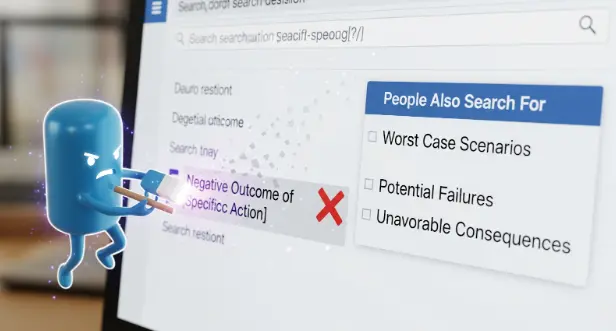You’ve spent weeks fighting to remove a damaging search result. Finally, the URL is pushed out of view — but when you check your search presence, the “People Also Search For” box is still full of questions you don’t want tied to your name.
This is the frustrating reality many businesses face: removing one page from the results doesn’t always erase the connections algorithms have already made. Those links, questions, and associations can linger long after the original URL is gone.
Why This Box Matters More Than You Think
The “People Also Search For” box isn’t just filler. It’s a behavioral map — a reflection of what users tend to click after searching for you. The suggestions may feel random, but they’re fueled by patterns: repeated searches, common phrases in reviews or articles, and content that keeps people engaged.
If negativity has been linked to your name, this feature can quietly reinforce it. Even without the original link present, the algorithm may continue to surface similar topics, attracting more clicks and maintaining that association.
The Limits of One-URL Suppression
Suppressing a single URL can help remove a direct source of harm, but it doesn’t erase the context search engines have built.
Think of it like pulling a weed from your garden without removing the roots. The page may be gone, but the connections it triggered — related searches, suggested questions, even other pages quoting it — remain intact.
This is why businesses often suppress a result only to find that the “People Also Search For” box still hints at the very issue they thought they’d buried.
How Algorithms Keep the Connection Alive
Search engines don’t operate in isolation. If a page once ranked for your name and a damaging keyword, other pages with similar language or sentiment can fill its place. The algorithm treats these patterns as signals, and those signals can persist long after the first page disappears.
Worse, if people keep clicking those related questions out of curiosity, it strengthens the signal — a feedback loop that can keep the unwanted topic in rotation.
Breaking the Cycle: What Actually Works
1. Replace the Negative Signal with Stronger, Positive Ones
Don’t just remove — replace. Publish authoritative, engaging content that uses the exact high-value keywords but in a positive, accurate context. The goal is to provide search engines with new content to associate with your name.
2. Address the Topic Directly
If a damaging question is showing up, consider creating a clear, confident answer to it on your own site. Done correctly, this can allow your version to outrank or compete with other sources.
3. Build a Broader Reputation Strategy
This is where reputation management firms like NetReputation excel. Rather than chasing one result at a time, they create an ecosystem of optimized, credible content that reshapes the overall narrative — making it harder for negative associations to resurface.
A Relatable Example
Imagine a small consulting firm that faced a wave of bad publicity after a single client dispute. They successfully suppressed the main article, causing the problem. However, weeks later, potential clients were still seeing “People Also Search For” suggestions like “[Firm Name] complaints” or “Is [Firm Name] trustworthy?”
Why? Because the suppression didn’t touch the reviews, blog posts, and forum threads that had echoed the exact keywords. The algorithm still had plenty of negative material to work with. It wasn’t until they launched a full-scale content and engagement campaign that those questions finally shifted.
The Big Takeaway
Suppressing a harmful URL can feel like a win — and it can be an important first step — but it’s rarely the full solution. The “People Also Search For” box is built on patterns, not just single sources. Until you change those patterns by flooding the search ecosystem with better signals, the associations can linger.
In short:
- One-page fixes are temporary if related signals remain active.
- Search behavior fuels persistence — clicks keep bad suggestions alive.
- Broad strategies outperform isolated actions when reshaping algorithmic features.














Leave a comment